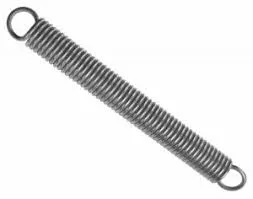
- Mobile Phone
- +8613931874955
- sales@cntcmetal.com
Guide to Installing Coil Springs for Optimal Performance in Your Vehicle
Installing Coil Springs A Step-by-Step Guide
Coil springs are essential components in a vehicle's suspension system, providing support, stability, and ride comfort. Over time, these springs may wear out or become damaged, leading to a need for replacement. Installing coil springs may seem daunting, but with the right tools and guidance, it can be a manageable task. This article will outline the necessary steps for installing coil springs, ensuring your vehicle maintains optimal performance and ride quality.
Tools and Materials Needed
Before you begin, gather the following tools and materials
1. Socket Set For removing and tightening bolts. 2. Wrenches Adjustable or torque wrenches may be necessary. 3. Spring Compressors Essential for safely compressing the coil springs before removal and installation. 4. Jack and Jack Stands To lift the vehicle securely. 5. Safety Glasses and Gloves Important for protection during the process. 6. Service Manual Specific to your vehicle make and model.
Step 1 Preparation
Start by ensuring your vehicle is parked on a flat, stable surface. Engage the parking brake and disconnect the battery to avoid any electrical issues while working on the suspension.
Step 2 Lifting the Vehicle
Using a jack, lift the vehicle and secure it with jack stands. Never work under a vehicle supported only by a jack. Make sure the vehicle is stable before you continue.
Step 3 Removing the Wheels
Use a socket set to remove the lug nuts and take off the wheels. This will give you access to the suspension components and the coil springs.
Step 4 Detaching the Suspension
Next, locate the components connected to the coil spring. This typically includes the lower control arm and the upper strut assembly. Use your wrench to remove any bolts or nuts securing these parts. It's important to take your time here; if necessary, refer to your vehicle's service manual to ensure you don’t miss any steps.
Step 5 Compressing the Coil Springs
installing coil springs

Before removing the coil spring, use the spring compressors. These tools will safely compress the spring, reducing tension and allowing for easy removal. Carefully follow the instructions provided with your spring compressors, making sure to attach them evenly to avoid any accidents.
Step 6 Removing the Old Coil Springs
Once the springs are compressed, you can now remove the bolts securing the spring to the suspension assembly. Carefully detach the old coil springs and set them aside.
Step 7 Installing the New Coil Springs
Position the new coil springs into place. Ensure they are correctly aligned and seated in the spring perches at both the top and bottom. Reattach any components you removed earlier, making sure all bolts are tightened according to your vehicle’s specifications.
Step 8 Releasing the Spring Compressors
After ensuring everything is secure, carefully release the spring compressors. Double-check the spring’s seating as they expand. The springs should be in their proper position without any signs of misalignment.
Step 9 Reattaching the Wheels
With the coil springs securely in place, it’s time to put the wheels back on. Tighten the lug nuts in a crisscross pattern to ensure even pressure. Lower the vehicle back to the ground using the jack.
Step 10 Final Checks
Once the vehicle is back on the ground, reconnect the battery. It’s wise to double-check all bolts and components, ensuring everything is tight and secure. Take your vehicle for a short test drive to check for any unusual noises or handling issues.
Conclusion
Installing coil springs can be a rewarding DIY project for any automotive enthusiast. By following these steps and ensuring you take the necessary precautions, you can successfully replace your coil springs and restore your vehicle's ride quality. Always consult your service manual for specific instructions related to your vehicle make and model, and don’t hesitate to seek professional assistance if needed. Happy driving!
share:
-
creative-ways-to-decorate-your-tomato-cageNewsAug.22,2025
-
common-mistakes-when-installing-brick-wall-tiesNewsAug.22,2025
-
customizing-conical-springs-for-aerospace-applicationsNewsAug.22,2025
-
galvanized-tie-wire-for-binding-pipesNewsAug.22,2025
-
environmental-impact-of-using-snake-spacers-in-plumbingNewsAug.22,2025
-
sacrificial-formwork-systems-for-complex-structuresNewsAug.22,2025
-
Wall Ties for Concrete: Invisible Guardians of Building Structural StabilityNewsAug.08,2025
